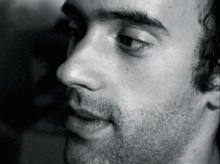|
|
>> Versão Portuguesa |
| A Subtle Expansion VIRGÍLO MELO |
2012.02.23 |
|
“All-in-one expanded”, commissioned by the Casa da Música, has an origin, which deserves to be outlined, since it implies various aspects of technical and musical nature. In 2010 the Casa da Música commissioned to Carlos Caires a score (“All-in-one”) to be performed by the Remix Ensemble and included in a concert paying tribute to John Cage. The piece had as a point of reference the famous “silent work” of the American composer: “4:33”. Applying a kind of elegant irony, Carlos Caires chose to provide Cage’s fixed duration rigorously with music, filled with the absence of what the honouree himself denied to exist: “silence”. In fact, it is worth mentioning that filling in certain chronometrical durations is Cage’s curious feature, yet appearing as somewhat incompatible with his pan-sonic and egophobic anarchism. As the title indicates the new, recently presented piece for large orchestra (including tripled woodwinds and a complete section of brass), is an expansion of the 2010 score. This expansion, not only at the level of the musicians involved, and what concerns its implications in terms of orchestration, but also with regard to duration (which goes to eight minutes), led the composer to develop a refined trope technique. The two scores are obviously related; yet the one does not sound only as a mere version (expanded or reduced) of the other. It would be permissible to claim that the expression “all-in-one”, designating the work’s atmosphere, is slightly exaggerated or at least enigmatic, nevertheless the music is indeed of noteworthy clarity and classicism. Clarity, as the relatively homogenous figuration (punctual blocs with written ressonances, opposing and superimposing themselves on lines) evolves in a secure and always interesting harmonic direction; classicism, not in any referential sense, but in the subtlety and economy, with which different perspectives are achieved, never resorting to easy effects or bizarre sonorities as the main purpose. At the same time the elaboration of the electronics does not privilege what, in this musical context, would be questionable showing-off, but maintains coherence and integration in the harmonic dimension. The orchestra, under Christoph König, gave a correct performance of the score, in which the rhythmical precision is essential, yet sounded slightly terse in gesture. Without any doubt, the fact that the electronics was pre-recorded, and so required the use of “click track”, had its influence. One does not intend here to criticise the choice of the composer, who in fact throughout his catlogue has adopted the most diverse forms of integrating electronic means within the interpretative praxis. Ultimately, being suitable in musical terms is the most important factor, beyond discussions, which can rapidly become Byzantine and unprofitable. One should only point out that the act of performance, in this type of relation with musical time, demands paradoxically a major flexibility to be acquired, what presumes being familiar with this kind of contemporary repertoire. The audience’s good reception suitably answered to one more excellent work by Carlos Caires. |
|
 On February 11, at the concert of the
On February 11, at the concert of the